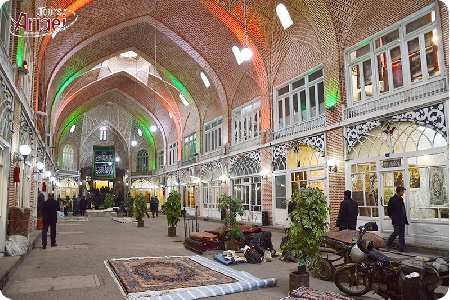Tabriz traditional Bazar, part of UNESCO’s list of World Heritages, is the world's biggest traditional market. Since the Khorasan Road (mistakenly known as Silk Road) passed near Tabriz, the city was economically flourished. The specific time of its construction is not known, however, it was restored 300 years ago, after a highly destructive earthquake. The earliest record of the Bazar, dates back to the 12th century, in travelogues of those who passed Tabriz. The center of Tabriz city is foursquare and the center of the foursquare is the Bazar connecting to Ali Ghapu from the east, to congregational mosque from the west, and Mehran River from the north. The Bazar is divided into subsections that in Farsi are referred to as Bazarche meaning small Bazar, traditionally merchants of a subsection all sold the same goods. The main Bazarche of Tabriz are:
• Amir’s Bazar • Chinaware Bazar • Harem Bazar • Glass Work Bazar • Sadeghieh Bazar • Abbachi Bazar • Shoemakers Bazar • Yamani Bazar
